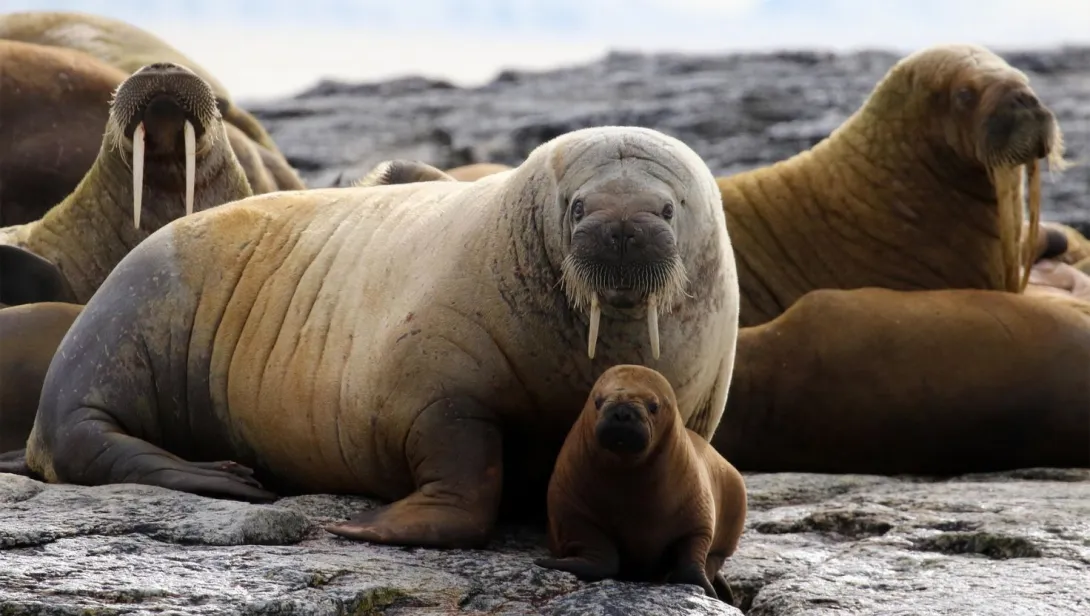Skip to main content
General Information
- Walruses are large marine mammals found in the Arctic Ocean and sub-Arctic seas.
- They are known for their distinctive tusks, whiskers, and bulk.
- There are two subspecies: the Atlantic walrus and the Pacific walrus.
- They belong to the family Odobenidae and are the only living species in their family.
- Walruses play a vital role in Arctic marine ecosystems.
Physical Characteristics
- Adult males can weigh up to 1,700 kg (3,700 lbs), and females up to 1,200 kg (2,600 lbs).
- They have a thick layer of blubber for insulation in icy waters.
- Tusks are elongated canine teeth that can grow over 1 meter and are used for defense and movement on ice.
- They have stiff whiskers called vibrissae to detect prey on the ocean floor.
- Walruses have wrinkled, thick skin and sparse hair covering their bodies.
Habitat and Range
- They inhabit ice-covered waters of the Arctic and sub-Arctic regions.
- Pacific walruses are found near Russia and Alaska, while Atlantic walruses are found near Canada and Greenland.
- They rely on sea ice for resting, breeding, and access to feeding grounds.
Diet and Feeding
- Walruses are primarily benthic feeders, meaning they feed on the ocean floor.
- Their diet includes clams, mussels, worms, snails, and sea cucumbers.
- They use their whiskers to find prey and create suction with their mouths to remove soft parts from shells.
- They can dive to depths of over 90 meters (300 feet) in search of food.
Social Behavior
- Walruses are highly social animals and live in large groups called herds.
- They are known to be vocal and communicate using bell-like sounds, grunts, and roars.
- They haul out on ice floes or beaches to rest and interact socially.
- Males are often territorial during mating season and use their tusks to fight for dominance.
Reproduction and Lifecycle
- Walruses reach sexual maturity around 5-7 years of age.
- Mating occurs in the water during the winter breeding season.
- The gestation period is about 15 to 16 months, including delayed implantation.
- Females give birth to a single calf, which stays with its mother for up to 2 years.
- Calves are born with a thick layer of blubber and can swim shortly after birth.
Threats and Conservation
- Main threats include climate change, melting sea ice, and human disturbance.
- They were historically hunted for ivory tusks, oil, and hides.
- Walruses are currently protected under various international agreements and national laws.
- Organizations work to monitor populations and protect critical habitats.
- Climate change remains the most pressing issue affecting their survival.
Interesting Facts
- Walruses can sleep underwater and surface to breathe without waking up.
- They can use their tusks to pull themselves out of the water onto ice.
- They have air sacs in their neck that function like flotation devices.
- Some individuals can live up to 40 years in the wild.
- They are an important cultural symbol for many Indigenous Arctic communities.
